Anuradhapura
Anuradhapura is one of the ancient capitals of Sri Lanka, famous for its well-preserved ruins of ancient Lankan civilization. From the 4th century BC, it was the capital of Sri Lanka until the beginning of the 11th century AD. During this period it remained one of the most stable and durable centers of political power and urban life in South Asia. The ancient city, considered sacred to the Buddhist world, is today surrounded by monasteries covering an area of over sixteen square miles (40 km²). Anuradhapura is also significant in Hindu legend as the fabled capital of the Asura King Ravana in the Ramayana.
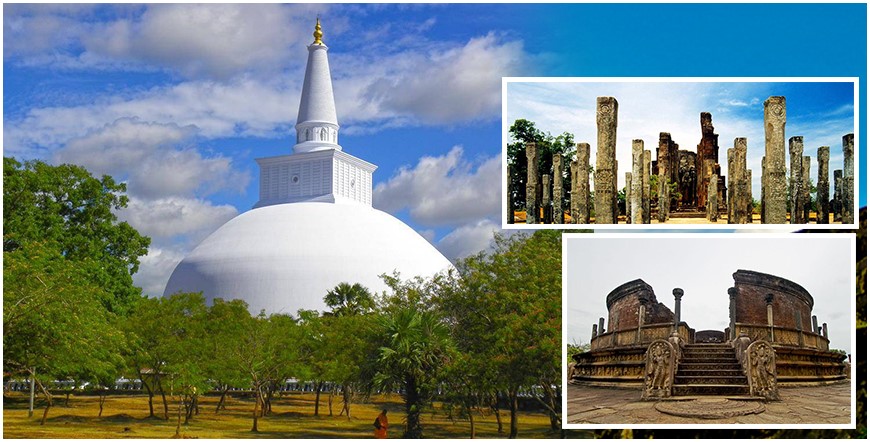
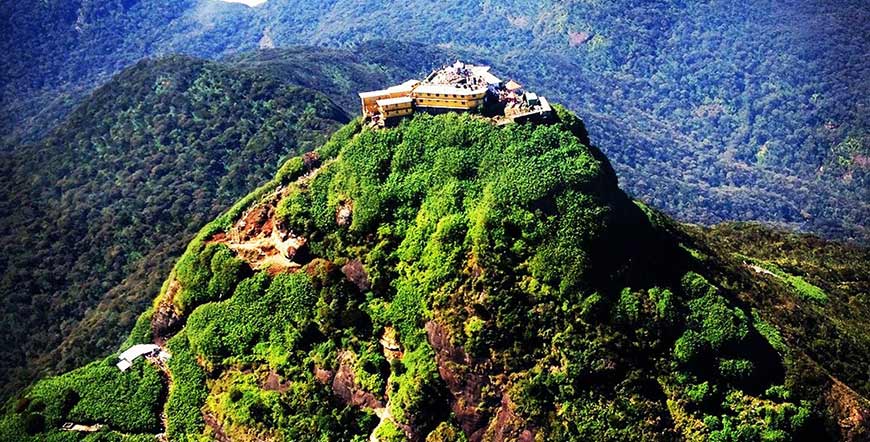
ADAM’S PEAK
Adam’s Peak is a 2,243 meters (7,359 ft) tall conical mountain located in central Sri Lanka. It is well-known for the Sri Pada “sacred footprint”, a 1.8 m rock formation near the summit, in Buddhist tradition held to be the footprint of Buddha, in Hindu tradition that of Shiva and in Muslim tradition that of Adam.
Bentota
A Sri Lankan coastal city famous for golden beaches, Bentota is situated on the southern coastal tip of the Galle District of the Southern Province . The town is a popular tourist attraction. It is especially famous among the foreign tourists. The name comes from a mythical story which dates back to kings time saying a demon called Bem ruled this river ( tota = river bank. Bentota hosts a handful of world proclaimed hotels. It is the hosting land for the famous Sri Lankan Jeweler Aida. Bentota also delivers an ancient art of healing called Ayurveda . Bentota is also famous for its production in Toddy. An alcoholic beverage made out of cocunut nectar. The city’s population is estimated to be between 25,000-50,000.
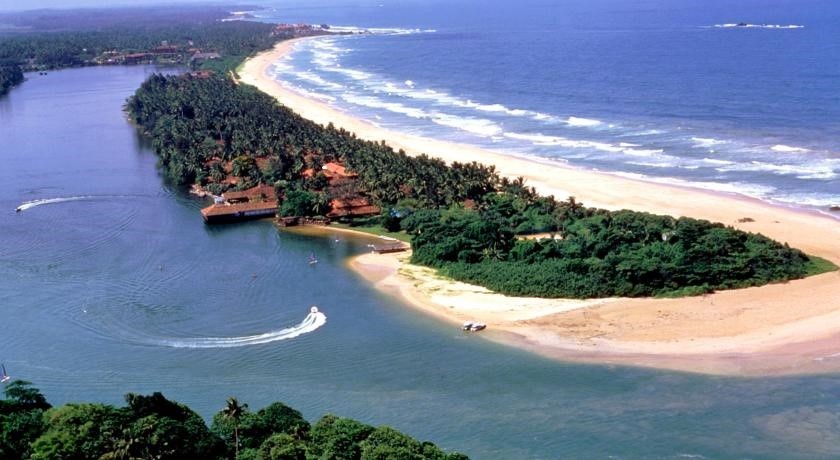
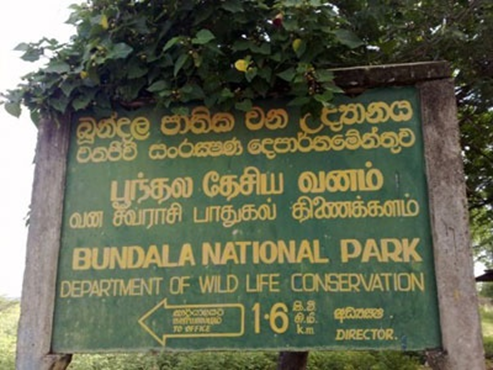
BUNDALA NATIONAL PARK
Located about fifteen kilometers east of Hambantota Bundala National Park is one of Sri Lanka’s foremost destinations for birdwatchers, protecting an important area of coastal wetland famous for its abundant aquatic (and other) birdlife. The park is also home to significant populations of elephants, Marsh & estuarine crocodiles, turtles & other fauna, including the leopard. Stretching along the coast east of Hambantota, Bundala National Park is ideal for instant gratification: in a four hour jeep ride, we can see elephants, 8ft crocs, giant squirrels & flamingoes. Afternoon safaris in the dry season (December – May) provide visitors with the best chance of seeing the wildlife.
COLOMBO
The name “Colombo”, first introduced by the Portuguese in 1505, is believed to be derived from the classical Sinhalese name Kolon thota, meaning “port on the river Kelani”. It has also been suggested that the name may be derived from the Sinhalese name Kola-amba-thota which means “Harbour with leafy mango trees”. Due to its large harbour and its strategic position along the East-West sea trade routes, Colombo was known to ancient traders 2,000 years ago. However it was only made the capital of the island when Sri Lanka was ceded to the British Empire in 1815, and its status as capital was retained when the nation became independent in 1948. In 1978, when administrative functions were moved to Sri Jayawardenepura Kotte, Colombo was designated as the commercial capital of Sri Lanka.
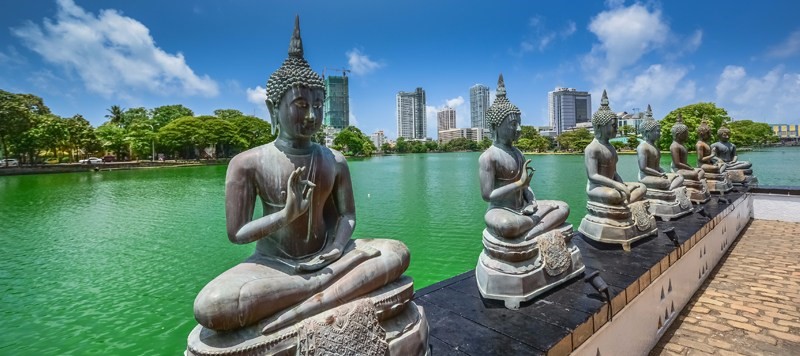
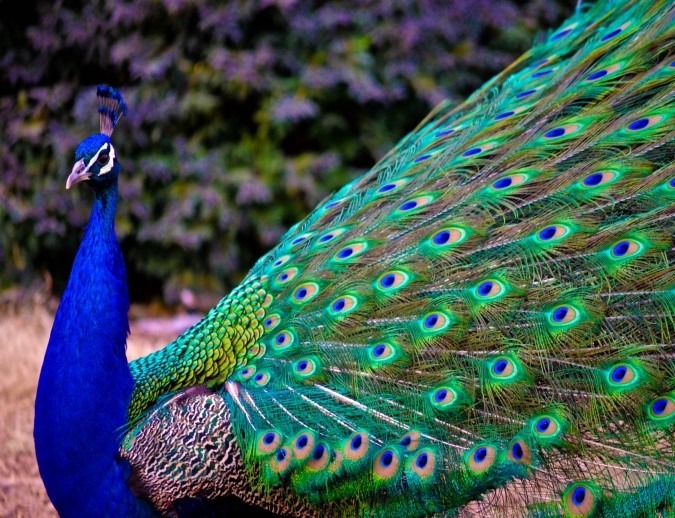
UDAWALAWE NATIONAL PARK
Udawalawe National Park lies on the boundary of Sabaragamuwa and Uva Provinces, in Sri Lanka. The national park was created to provide a sanctuary for wild animals displaced by the construction of the Udawalawe Reservoir on the Walawe River, as well as to protect the catchment of the reservoir. Before the designation of the national park, the area was used for shifting (chena farming). The farmers were gradually removed once the national park was declared. The park is 165 kilometers (103 mi) from Colombo. Udawalawe is an important habitat for water birds and Sri Lankan elephants. It is a popular tourist destination and the third most visited park in the country.
Udawalawe is also a good bird watching site. Endemics such as Sri Lanka spur fowl, red-faced malkoha, Sri Lanka grey hornbill, brown-capped babbler, and Sri Lanka jungle fowl are among of the breeding resident birds. White wagtail and black-capped kingfisher are rare migrants. A variety of water birds visit the reservoir, including cormorants, the spot-billed pelican, Asian open bill, painted stork, black-headed ibis and Eurasian spoonbill.
SIGIRIYA
Sigiriya or Sinhagiri (Lion Rock Sinhalese: සීගිරිය, Tamil: சிகிரியா, pronounced see-gi-ri-yə) is an ancient rock fortress located in the central Matale District near the town of Dambulla in the Central Province, Sri Lanka. The name refers to a site of historical and archaeological significance that is dominated by a massive column of rock nearly 200 metres (660 ft) high. According to the ancient Sri Lankan chronicle the Culavamsa, this site was selected by King Kasyapa (477 – 495 CE) for his new capital. He built his palace on the top of this rock and decorated its sides with colourful frescoes. On a small plateau about halfway up the side of this rock he built a gateway in the form of an enormous lion. The name of this place is derived from this structure —Sīhāgiri, the Lion Rock. The capital and the royal palace was abandoned after the king’s death. It was used as a Buddhist monastery until the 14th century.Sigiriya today is a UNESCO listed World Heritage Site.
It is one of the best preserved examples of ancient urban planning. It is the most visited historic site in Sri Lanka.
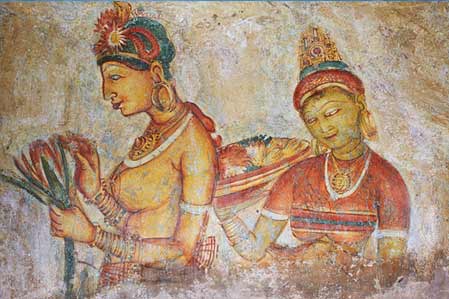
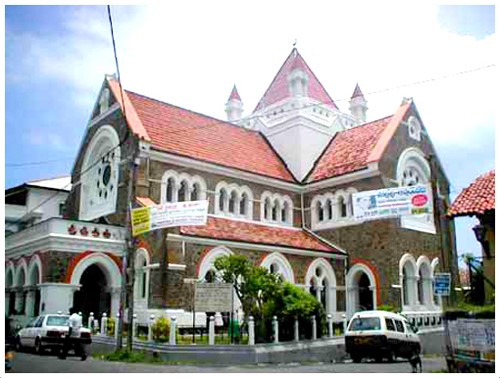
ONE DAY OF GALLE CITY TOUR
It is an excursion in the day to world Heritage city, Galle where you can witness colonial time ruins, Museum and famous Dutch fort including tilt fishing, Koggala river safari, Turtle Hatchery and a tea factory. The seaside town of Galle is 116 Km away from Colombo by road or rail, down the south coast of Sri Lanka. Both routes are picturesque, following the coastline closely for much of the way. Today’s town has grown greatly and spreads into the surroundings but the Fort is the slow beating heart of Galle‘s history. The walled city has stood since the early sixteenth century, through the Colonial periods of the Portuguese, Dutch and British and in our present times is proclaimed as an Archaeological Reserve and has been identified as a living World Heritage Site. The etymology of the name Galle is explained as probably an altered form of the Sinhalese word “gala”: a cattle fold or posting-place from which the Portuguese named it Point-de-Galle. The simpler and more popular theory is found in the similarity of the Sinhalese word: gala, for rock, which the Portuguese duplicated by adopting the Latin word: gallus, for rooster. They thus designed the coat-of-arms of the city as that of a rooster standing upon a rocky perch.
ELEPHANT ORPHANAGE PINNAWALA
Pinnawala Elephant Orphanage is an orphanage, nursery and captive breeding ground for wild Asian elephants located at Pinnawala village. Pinnawala is notable for having the largest herd of captive elephants in the world.
The orphanage was originally founded in order to afford care and protection too many of the orphaned unwanted wild elephants found wandering in and near the forests of Sri Lanka. It was established in 1975 by the Sri Lanka Department of Wildlife Conservation See baby jumbos wondering around their cramped foster home or bottle fed and bathed by their human foster fathers at Pinnawala, about 90Km from Colombo towards Kandy is the home to some 100 or more elephant orphans. A place you will really enjoy and never forget.
Pinnawala is the most popular and accessible place to see large numbers of these lovable animals in a natural habitat. It is the most popular elephant ‘attraction’ with tourists because nowhere else, except at the splendid ‘pereheras’ will you see so many elephants at such close quarters. The government opened it in 1975 since many more baby elephants than usual had become separated from their herds that year. The persistent drought had dried up many village wells into which the young elephants had fallen, while attempting to get a drink. Even today elephants fall into quarry or gem-mining pits, and poachers or angry farmers who shoot the adults for destroying their crops, orphan some youngsters.

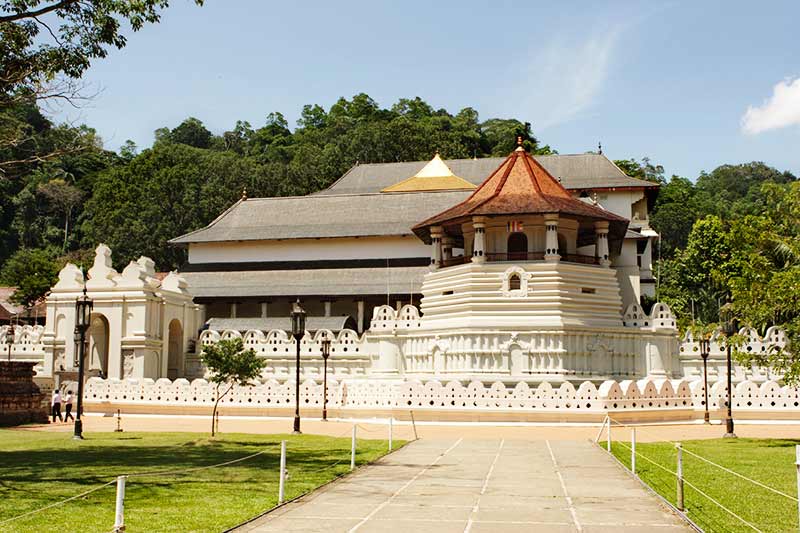
KANDY
Kandy is a large city in central Sri Lanka. It’s set on a plateau surrounded by mountains, which are home to tea plantations and bio diverse rainforest. The city’s heart is scenic Kandy Lake (Bogambara Lake), which is popular for strolling. Kandy is famed for sacred Buddhist sites, including the Temple of the Tooth (Sri Dalada Maligawa) shrine, celebrated with the grand Esala Perahera annual procession. One of the most sacred places of worship in the Buddhist world. It was declared a world heritage site.
The main attraction of the city and also the most sacred Buddhist establishment in Sri Lanka is where one of Buddha’s tooth is being kept. Built in the 16th century but improvements and additions have been done to this structure until the fall of the Kandy kingdom. A golden canopy was added recently. Daily rituals are being carried out at various offering times to the shrine. A dress code applies for entering the temple. The magnificence has been enhanced by the octagonal pavilion.
Kandy is synonymous with arts and crafts of Sri Lanka than anywhere else in the country. It is probably because the Kandy is where all elite who patronised these crafts survived during 300 years of war with the Europeans. Kandy is probably the best place to buy most of the handicrafts produced in Sri Lanka because there are number of shops catering to the tourists. Tourists could watch local crafts coming into life at the At the Kandyan Art Association.
Once a pleasure gardens of a Kandyan Queen this 40ha land is a beautiful park with numerous tropical foliage and the best in the island. The Commander of the allied forces in Southeast Asia Earl Mountbatten had the headquarters in the garden during the Second World War.
NUWARAELIYA
Nuwara Eliya is a city in the hill country of the Central Province, Sri Lanka. Its name means “city on the plain (table land)” or “city of light”. The city is the administrative capital of Nuwara Eliya District, with a picturesque landscape and temperate climate. It is at an altitude of 1,868 m (6,128 ft) and is considered to be the most important location for tea production in Sri Lanka. The city is overlooked by Pidurutalagala, the tallest mountain in Sri Lanka. Nuwara Eliya is known for its temperate, cool climate — the coolest area in Sri Lanka.
The town’s attractions include the golf course, trout streams, Victoria Park, and boating or fishing on Lake Gregory. Victoria Park is an attractive and well-used oasis. It is popular with birdwatchers at quieter times because of the good opportunities for seeing species, particularly the Indian blue robin, pied thrush or scaly thrush lurking in the denser undergrowth. The Kashmir flycatcher is another attractive bird species in the park.
Galway’s Land Bird Sanctuary, close to Lake Gregory, is another wildlife site of 0.6 km2.
The city is a base for visits to Horton Plains National Park.
One of the distinctive features of Nuwara Eliya’s countryside is the widespread growing of vegetables, fruit and flowers usually associated with temperate Europe. This “Little England” is covered with terraces growing potatoes, carrots, leeks, and roses, interspersed with tea bushes on the steeper slopes.
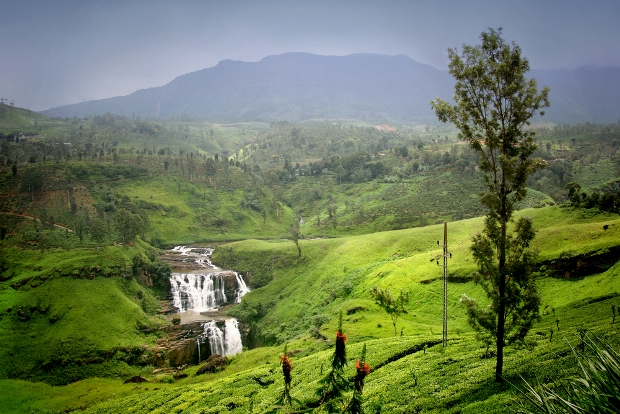
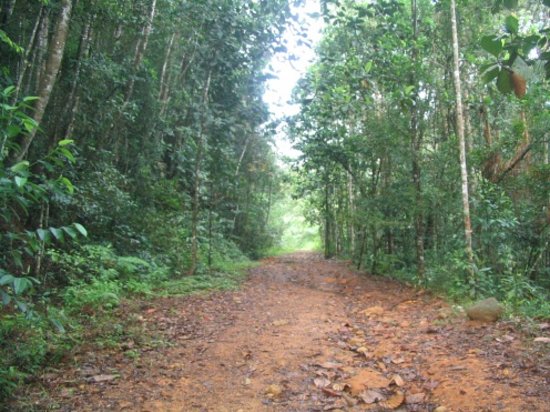
SINHARAJA FOREST RESERVE
Sinharaja Forest Reserve is a national park and a biodiversity hotspot in Sri Lanka. It is of international significance and has been designated a Biosphere Reserve and World Heritage Site by UNESCO. The hilly virgin rainforest, part of the Sri Lanka lowland rain forests Eco region, was saved from the worst of commercial logging by its inaccessibility, and was designated a World Biosphere Reserve in 1978 and a World Heritage Site in 1988. The reserve’s name translates as Lion Kingdom. The reserve is only 21 km from east to west, and a maximum of 7 km from north to south, but it is a treasure trove of endemic species, including trees, insects, amphibians, reptiles, birds and mammals. Because of the dense vegetation, wildlife is not as easily seen as at dry-zone national parks such as Yala. There are about 3 elephants and the 15 or so leopards are rarely seen. The most common larger mammal is the endemic purple-faced langur. An interesting phenomenon is that birds tend to move in mixed feeding flocks, invariably led by the fearless greater racket-tailed drongo and the noisy orange-billed babbler

